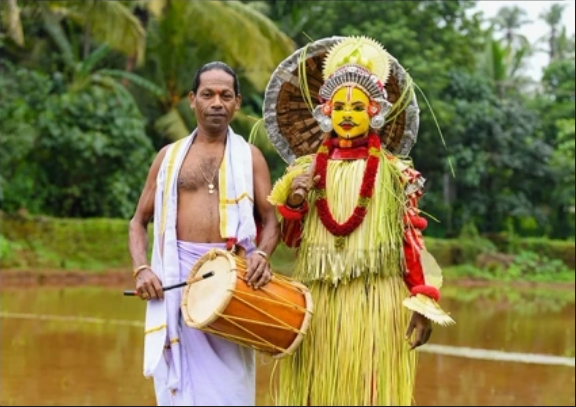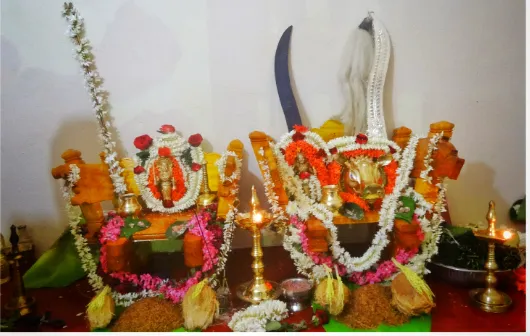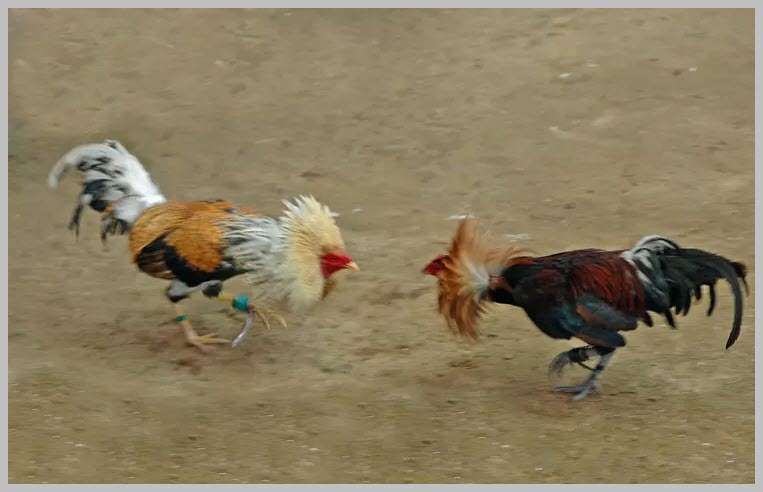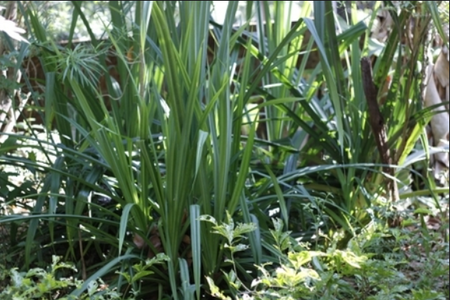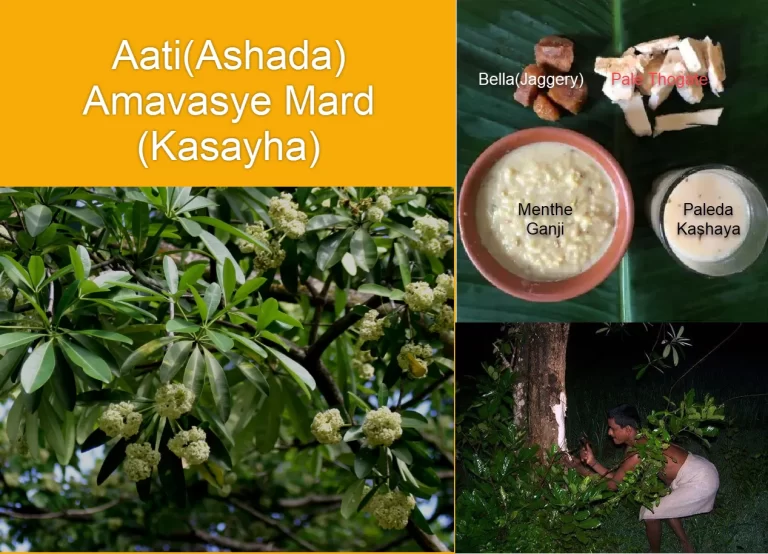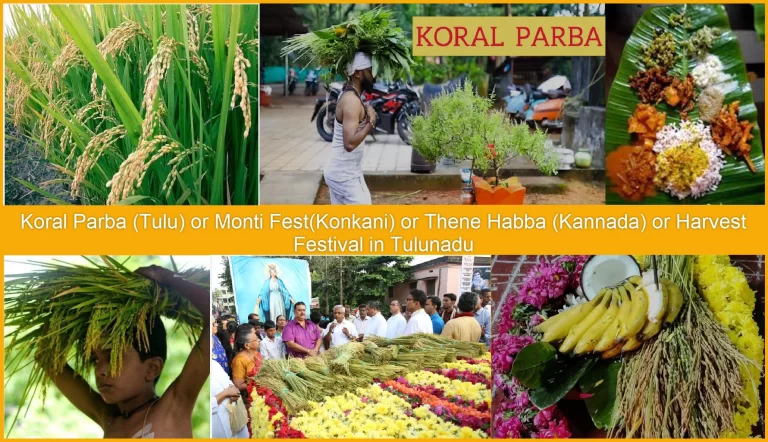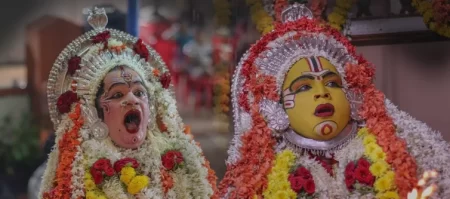Aati Kalenja
Aati Kalenja Festival
– A Disappearing Tradition of Tulu Nadu. Aati Kalenja, is an agricultural dance, that can trace its roots to when agriculture itself started in Tulu Nadu. During June and July, the farmer stops agricultural activitie
Aati is an inauspicious month as per the Tulu calendar. It is believed that this month has most of the disasters and calamities happening hence the traditions forbid anyone from buying anything new or starting up anything. Aati Kalenja festival is one of the festivals celebrated in Mangalore by the Nalke tribe.
Aati Kalenja is a folk way of dealing with the nature to protect human from the torrential rains by bringing in the spirit of Kalenja to the earth. Kalenja is a dance form performed to drive away the evil happening on the mother earth and bring in prosperity.
Aati Kalenja Festival – The Arrival of the Spirit Kalenja
Kalenja festival has a great tradition to look back in history. Come the season of rains, when agriculture activities stop completely, it is Aati Kalenja who roams around the settlements in Tulu Nadu expunging the evils that surrounds. The festival falls during the rainy season of July-August in the month of Aati.
The festival is celebrated to commemorate the arrival of Kalenja who comes to protect the people from all the bad omens like diseases, bacteria, flood etc.
With haldi-painted face, eyebrows, lips, and eyes accentuated with black liner; adorned in a costume made of coconut tree palms, a head cover made up of areca leaves that jut upwards adding height to the spirit, anklets that ring with every step, and most distinctly, carrying a parasol made of leaves that is twirled continuously, the image of Aati Kalenja makes for a spectacular viewing.
The spirit makes its way to houses of farmers, performing rituals that “rid” evils of disease, crop loss, and sadness, and in return is offered rice, coconuts, vegetables, and farm produce.
Aati Kalenja, is an agricultural dance, that can trace its roots to when agriculture itself started in Tulu Nadu. During June and July, the farmer stops agricultural activities. So, the spirit comes to protect the land, and to bless the land with good yield for the next season, as per locals beliefs.
The dance is mainly followed by the Nalike community that is spread over Dakshina Kannada, Udupi, and Kasargod districts, and Belthangady Mogeras. The difference in the two variations is that while a boy is adorned as “Aati Kalenja” in the Nalike tradition, two senior men act the part in the Mogera tradition.
The dance itself is simplistic, not conforming to the elaborate dogmatic rules seen in other classical dances, said Mr. Kumar. “There is no training given. The communities celebrate and dance in other occasions by clicking their heels, walking on their toes, and in general, with a spring in each step. This is extended to Aati Kalenja too,” he said.
Surprisingly, even though, until recently, Aati Kalenja was only an oral tradition – passed on from the senior of the village to the young performers – the custom has been preserved in its original form. And uniquely, Aati Kalenja, though a figure of supernatural powers, remains outside the purview of Hindu mythology.
There is no worship, no temples, no prayers for Aati Kalenja. There is no connected mythology in Hindu texts. He remains integral in the folk culture of the region, and only during Aati, he is believed to descend and bless the land.
However, with paddy fields disappearing around the countryside, the dance is gradually fading. It is now observed mainly in Puttur, Belthangady, and Sullia, which have been relatively untouched by urbanization, in the towns, the dance has been preserved by modifying the blessing of fields to the blessing of shops and houses.
Aati Kalenja Festival Mangalore
The Nalke community in Mangalore dresses up with a costume made of tender coconut leaves, colorful clothes, anklets, caps made of areca nut sheaths etc. Even the person does face paints with various colors and holds an umbrella made of leaves and dances in front of every house with the beats of the instrument tembare.
The Kalenja is dressed up with black and gray face paint with the red mustache and skirt that is made of strands of tender banana leaves and he wears a cobra-like head gear and ornaments made of palm leaves.
The Kalenjaper former visits every house and dances to ward off the evil and then collects little paddy, turmeric, charcoal, coconut etc. and perform rituals to ward off the evils and other misfortunes coming to the family.
Aati Kalenja – The Mythological Connection
Kalenja was a mythological character with whom the festivals rituals are connected. Kalenja was bestowed with divine powers, but a common man. With his powers, he was the one who was supposed to annihilate all the evils that were happening in the month of Aati.
Aati or Ashada the Month of Nourishment
Aati or Ashada is the month usually accompanied by torrential rain hence most people stay inside. The month of July-August is usually the season of heavy rainfall in those areas. During this month, most of the people follow some strict diets that will help them build immunity and let them be healthy.
Rainy seasons are indeed mesmerizing, yet there are many side effects of the same. Most of the places get flooded with rivers and streams overflowing. Hence nothing can be done in that month, hence there are not many activities done during the month. With these overflows, there is some purification happening, the ponds and rivers that become home to parasites will be cleared, with the excess water flowing away.
The month is observed with much enthusiasm by Nalke tribe in Mangalore, where everyone follows certain rituals and practices and modify their daily routines including, more of Ayurveda and certain foods that help to build immunity in this torrential rain.
Aati month is sacred, as that is the month when people offer to their ancestors and remember them.

